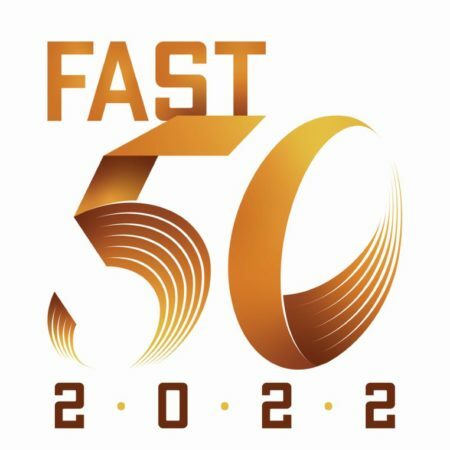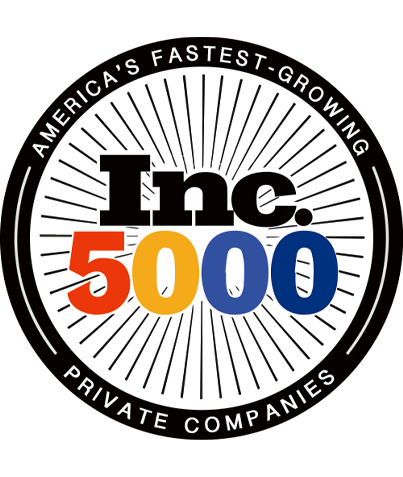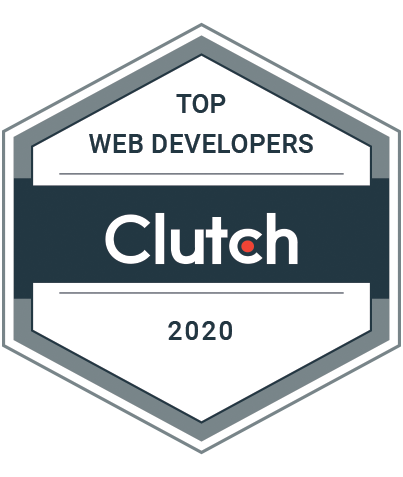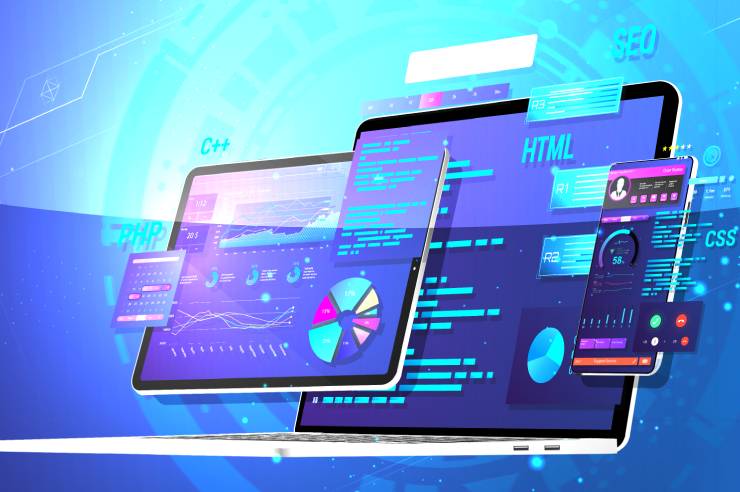As of January 1, 2019, there were exactly 4,100,667,287 active internet users around the world. According to a recent Netcraft survey, there are well over 200 million active websites, with nearly 10 times as many including inactive.
This data shows just how expansive the internet really is and how important it is in our society. As web development continues to get better and better, these statistics will only continue to climb. Therefore, it’s vital to stay ahead of the competition, and one of the best ways to do this is to understand the current and future web trends so that you can begin to implement them in your strategy. Below you’ll find a list of the top web development trends that you’ll see in 2019.
Technology Trends in Web Development
Artificial Intelligence (AI)
AI is only getting more popular as it becomes easier to incorporate, and it’s already being implemented by many companies (think Apple’s Siri). This technology can improve business models by automating many of the processes that occur on a website or app, making the lives of web development professionals much easier. Whether it’s Siri providing an answer to your question or Netflix recommending a movie based on previous movies you’ve watched, AI is behind it all.
GraphQL
GraphQL is a syntax (a set of rules for or analysis) that describes how to ask for data and is used to load data from a server to a client. GraphQL allows the client to specify exactly what data it needs, makes it easier to collect data from various sources, and uses a type system to describe data.
The benefit of this syntax is that the user can make a single call to fetch the required information rather than construct several requests to fetch data. GraphQL is great for building a stateless, client-independent backend with high flexibility. We already saw a spike in usage occur in 2018, and we can expect to see a continued trend in web development using GraphQL as more and more resources become available to learn about it.

Frontend Frameworks (Angular/Core, React, Vue)
Frontend frameworks such as Angular/Core, React, and Vue were important for growth in the web development world in 2018. Over the years, there has been growth in the use of frontend frameworks, and we can expect to see the popularity of this technology rise into 2019 and beyond. Frontend frameworks are primarily used in creating reliable and interactive web apps, offering more techniques to improve site speed and user experience (UX).
Serverless Applications
Serverless is a cloud-based architecture that allows web development professionals to build and operate applications and services without a server. This allows you to eliminate many of the usual server tasks such as patching, operation system maintenance, and capacity provisioning.
The general idea is that you have your code in the cloud, and actions only execute on certain events that happen on your website. The benefit of serverless in today’s world is that it increases the speed of your applications while saving you money.
JAMstack & Static Pages
JAMstack stands for JavaScript, APIs, and Markup, and is a useful architecture based on client-side JavaScript, reusable APIs, and prebuilt Markup. JAMstack is great because of its static nature, which makes scaling efficient and inexpensive.
Another benefit of JAMstack is that it allows for back-end functionality to take place in the user’s browser. Furthermore, it helps to improve search engine optimization and improves site speed. Since the architecture is generated primarily with JavaScript, web developers can work on JAMstack with ease in this efficient web development trend.

The Basics, Redefined (HTML, CSS, JavaScript)
2019 is underway and it’s still as important as ever to learn the basics of web development – HTML, CSS, and JavaScript. These languages are used in most everyday applications on the web and continue to be the building blocks of modern web development. However, languages like Node JS are also now considered more of a basic language that all web developers should learn.
Node JS is popular because it’s fast, used universally, and ideal for real-time applications. Expect to also see CSS Grid, Variables, and Flexbox become basics in the development world in 2019.
Modular Design
Modular design has become popular of late and should continue to be a trend in web development in 2019. Modular design is essentially a step up from web templates – with a web template, you’re restricted to a specific layout and design for an application or site. On the other hand, modular design allows developers to reuse components to create a web page.
The benefit of using this method is that you have more control over the site aesthetics and it’s cost-efficient to build and maintain. The only caveat with modular design is that each component must fit with one another for the site to be clean and complete. However, with expanded customization options and a friendly user experience, more and more web developers are turning to modular design.
Web Component Compiler
Web components are a set of web platform APIs that allow you to create custom, reusable, encapsulated HTML tags to use in web pages and web apps. Custom components and widgets built on the Web Component standards will work across modern browsers and can be used with any web development application, regardless of framework. They’re supported in all major browsers (such as Google and Firefox), save overhead JavaScript, and can build engaging user interfaces (UIs).
Single Page Applications (SPAs)
SPAs were popular in 2018 and could be even more widely used in 2019. SPAs are exactly as they sound – single-page applications that lack intricacy and complexity. They’re easier to navigate, speedy, and reduce costs, which will continue to make them a popular choice for web development this year. They run well on mobile devices and desktops as well, which is an added benefit as mobile web use continues to rise.
Best Technology Stack to Use for Web Applications
To create a web application, you need a reliable stack. A stack is a full set of layers that are required for web development. Application development requires a server to operate on, a database to store data, a programming language to add functionality, and HTML/CSS to enhance the aesthetics for the user. The most popular stack to use is LAMP.
LAMP (Linux, Apache, MySQL, PHP)
LAMP has been and will continue to be one of the best stacks available. It has been the top contender since 2000 (19 years ago!) and has continued to be so.
What makes it so popular? This stack is completely open-source (source code is made freely available and may be modified) and easy to customize. You can use it and change it at no cost.
LAMP is a compilation of the best technologies in the market today. For example, Linux is the best operating system for web development because it was built by developers, for developers. Apache is widely used by most websites, which hosts servers, and is also completely free and open source. MySQL is popular because of its legacy.
Essentially, you get the best of the best in each tier of the stack to build your web application. Although there are other popular stacks out there such as MEAN, Meteor, and Ruby on Rails, LAMP continues to be the stack of choice – a web development trend that will hold strong in 2019.
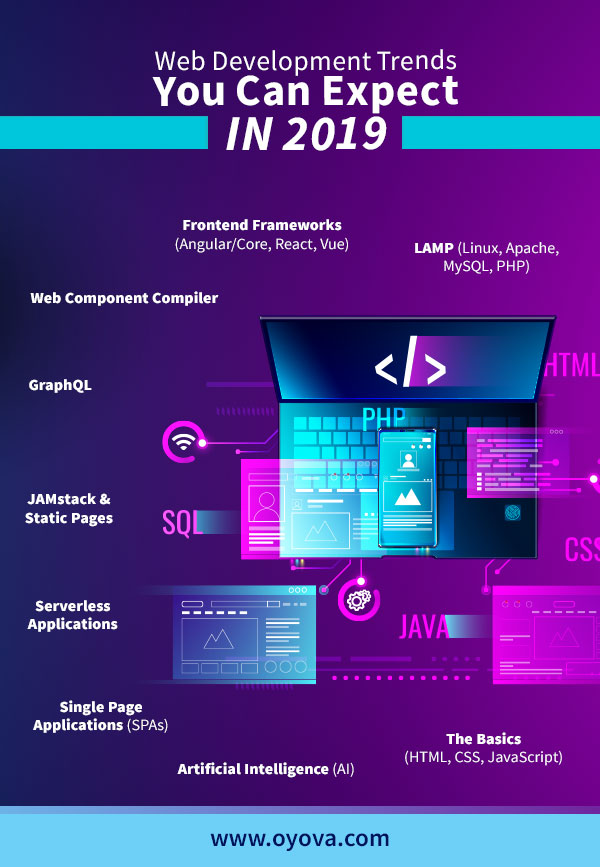
Our Awards
